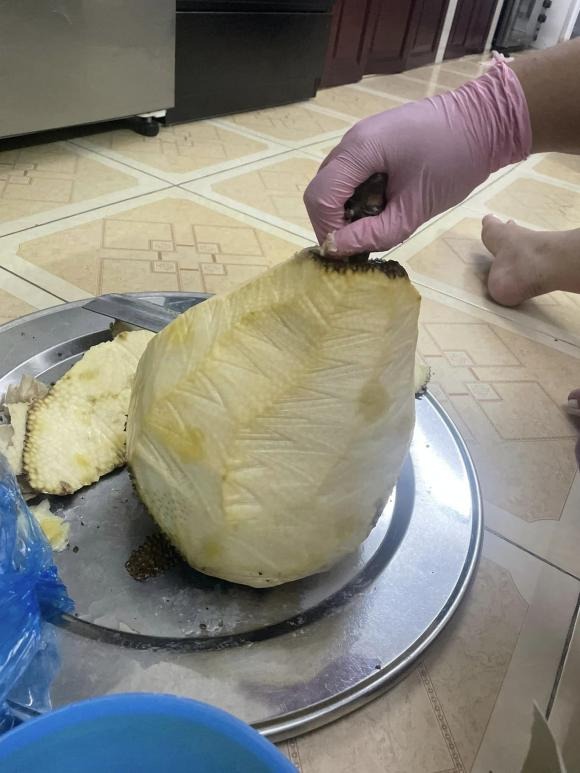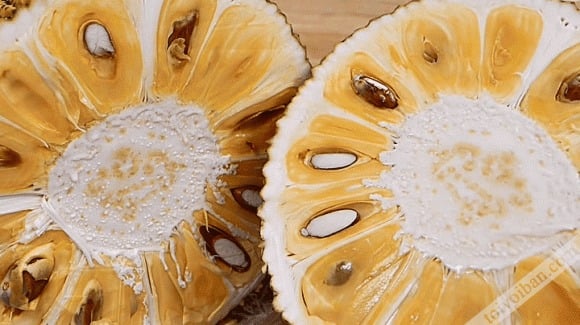On a forum for crafty moms, a little-known yet effective tip for cleaning sticky jackfruit sap was shared.
Jackfruit is a popular summer fruit that can be enjoyed fresh, blended into smoothies, baked into cakes or jams, or used in desserts. However, the sticky sap it exudes can be a deterrent for many who wish to indulge in this tasty treat.
Jackfruit sap is a white, bitter liquid released from the tree’s trunk, leaves, and fruit. Due to its high viscosity, the sap can be a nuisance to remove from hands, knives, or clothing. Fortunately, a clever mom on the forum shared a simple solution to this sticky situation, making jackfruit preparation a breeze without the fear of getting sap everywhere.

Jackfruit, a versatile and delicious summer fruit.
To begin, leave the jackfruit whole and carefully peel away the spiky outer skin. As you peel, sap and moisture from the fruit’s flesh will ooze out, so have 3-4 paper towels handy to wipe it away.
Dispose of the spiky skin in a trash bag, then continue with the rest of the jackfruit as usual. This method ensures the fruit remains clean and free from any dirt or sap that may be on the outer skin. By following these steps, you can bid farewell to sticky hands and hello to enjoying jackfruit without the mess!

Dispose of the spiky skin and continue with your jackfruit preparation as normal.
Additionally, here are some other methods to remove jackfruit sap:
Rice Bran Method:
Before and after handling jackfruit, rub your hands in a container of rice for a few minutes, allowing the rice bran to coat your palms. This reduces the stickiness of the sap and makes it easier to remove.
Lemon Rub:
Rub affected areas of the skin or knife with lemon slices to neutralize the sap. Once the sap has been removed, wash the area with soap and water.
Apply a small amount of cooking oil to your hands and knives before and after handling jackfruit. The oil creates a temporary barrier, making it harder for the sap to adhere. After preparation, apply more oil and gently rub or use a scouring pad to scrub for a few minutes. Finally, wash your hands with soap and water to remove any remaining oil and sap.
































